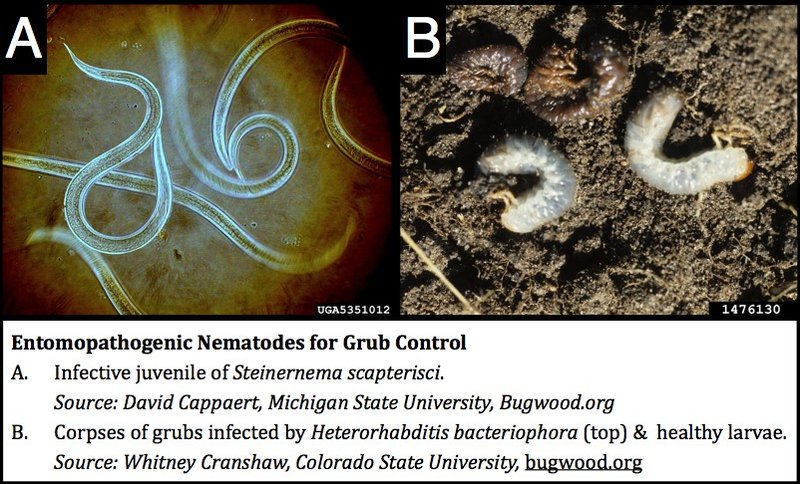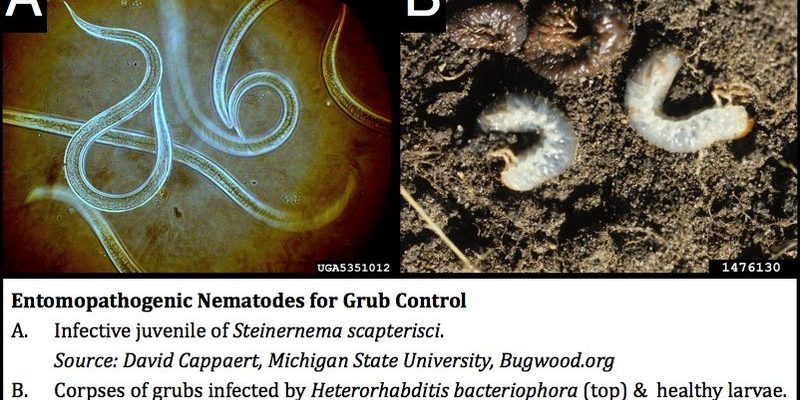
Nematodes are microscopic roundworms that naturally occur in the soil. They might be small, but they pack a punch when it comes to pest control! In this article, we’ll dive into how nematodes work, why they’re a great choice for managing grub worms, and how you can introduce them to your lawn. So, grab your favorite beverage, and let’s dig in!
What Are Grub Worms?
Grub worms are the larvae of various beetles, most commonly the Japanese beetle, June beetle, and chafers. They’re typically C-shaped and can range in color from white to off-white, with a brown head. These larvae thrive in warm soil and cause damage by munching on grass roots, leading to thinning and dead patches in your lawn.
You might be wondering why these little guys can wreak havoc on your carefully tended garden or yard. Well, they’re not just a nuisance; they can attract other pests, like raccoons and birds, who dig up your lawn looking for a tasty snack. If you want to keep your lawn healthy, addressing a grub worm problem is essential!
How Nematodes Work
Nematodes are beneficial nematodes, meaning they’re good for your garden and harmful to pests. They seek out critters like grub worms in the soil, enter their bodies, and release bacteria that kill them. It’s a natural process, almost like a tiny invasion where the nematodes do all the work!
Once you apply nematodes to your lawn, they can reproduce and spread, increasing their effectiveness. This is fantastic news for anyone looking to manage grub worms without resorting to chemical pesticides. Plus, since nematodes are harmless to plants, pets, and people, they truly embody the philosophy of a healthy garden.
Types of Nematodes
There are several species of nematodes that target grub worms specifically, but the most popular ones include:
- Steinernema feltiae: Great for controlling cutworms and several other pest larvae.
- Heterorhabditis bacteriophora: Known for targeting Japanese beetle larvae with high effectiveness.
Different nematodes may work better for different types of grub worms, so it’s worth doing a little research to find the right species for your situation.
Benefits of Using Nematodes
Choosing nematodes as your go-to solution for grub worms comes with numerous benefits. First and foremost, they’re an organic option, making them safe for your garden and the environment. Unlike chemical pesticides that can harm beneficial insects, nematodes work discreetly in the soil, targeting only the pests.
Another significant advantage is their ability to provide long-lasting control. Once they’re in the ground, they can multiply and continue to hunt down grub worms. This means you get ongoing protection without needing to reapply treatments frequently. Plus, using nematodes reduces the risk of developing pesticide-resistant pests, a growing concern among gardeners.
How Nematodes Benefit Soil Health
In addition to targeting pests, nematodes can actually improve soil health! As they move through the soil, they help aerate it and contribute to nutrient cycling. By fostering a healthy soil ecosystem, nematodes create a more vibrant garden environment that benefits all your plants.
How to Apply Nematodes for Grub Control
Applying nematodes can sound daunting, but it’s quite straightforward. Here’s a step-by-step guide to get you started:
1. Choose the Right Time: The best time to apply nematodes is when the soil temperature is between 55°F and 85°F. This typically means late spring to early summer.
2. Prepare the Soil: Water the area where you’ll apply the nematodes a day before. It should be moist but not soggy. This helps the nematodes move through the soil more easily.
3. Mix and Apply: Following the product instructions, mix the nematodes with water. It’s essential to apply them in the evening or on a cloudy day to protect them from UV light.
4. Water Again: After application, water the area lightly to help the nematodes settle into the soil. They’ll stay where the grubs are hiding.
5. Monitor Progress: Keep an eye on your lawn to see if the patches improve over time. You might notice healthier grass within weeks!
Common Challenges When Using Nematodes
While nematodes are a fantastic option, there are a few challenges you might encounter. For starters, they need moisture to survive and thrive. If your lawn becomes too dry after application, the nematodes could die off before they have a chance to target the grub worms.
Another issue is timing. If you apply them too late in the season or when temperatures are too low or too high, you may not see the best results. It’s crucial to check local climate conditions and apply them during peak effectiveness.
You might also notice that not all nematodes will eliminate every grub worm infestation. In some cases, it takes multiple applications or combining them with other pest management strategies for optimal results.
Comparing Nematodes to Other Pest Control Methods
When it comes to tackling grub worms, you have various options on the table. Here’s a quick comparison of nematodes versus a few other common methods:
- Chemical Pesticides: Often highly effective but can harm beneficial insects and soil health.
- Traps: Effective for monitoring pest populations but may not eradicate infestations.
- Natural Predators: Introducing birds or beneficial insects can help control pests, but they require more time to establish.
In contrast, nematodes are a happy medium—effective, safe for the environment, and promoting long-term soil health. It’s like having a natural ally in your garden!
Using nematodes as biological controls for grub worms offers a unique solution to a pesky problem. They’re safe, effective, and good for your garden ecosystem. You can take action against these critters while promoting a healthier lawn with just a bit of preparation and knowledge. If you’re facing a grub worm issue, consider turning to nematodes. You might just find them to be the best-kept secret in garden pest control! Happy gardening!

